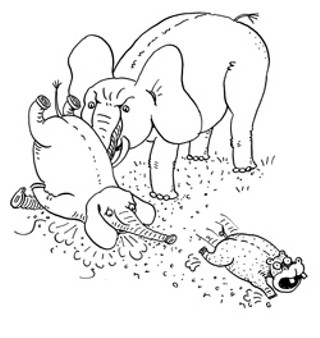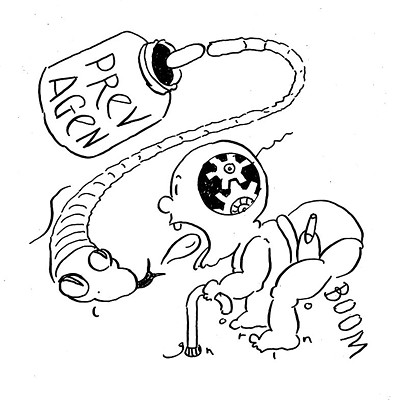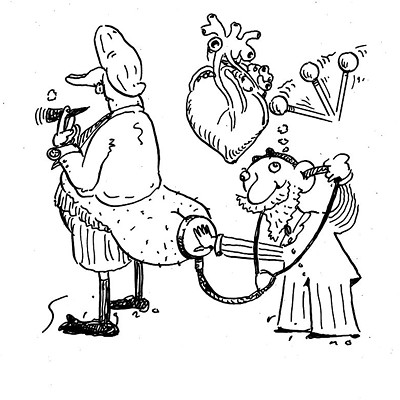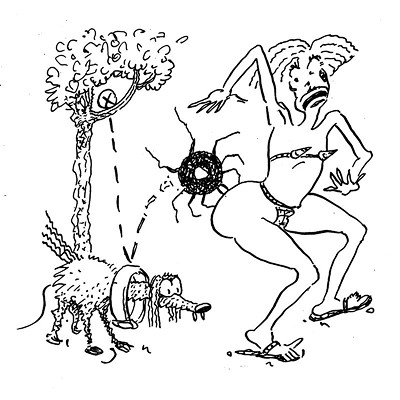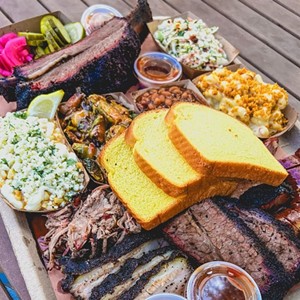I've read that elephants are now exhibiting aggression previously unseen —including raping rhinos on the African savannah. Have we truly screwed up the elephants that much, or is this merely one of those media myths?
—K. Honey, Georgetown, Ontario
As far as I’ve seen, the most unambiguous claim that male elephants do with some regularity rape rhinoceroses appears in an October 2006 New York Times Magazine article titled “An Elephant Crackup?” In opening his argument that a specieswide breakdown in social cohesion has led to an upsurge in violence by elephants, author Charles Siebert offers evidence that aggression by elephants has been marked by what he calls a “singular perversity”: “Since the early 1990’s, for example, young male elephants in Pilanesberg National Park and the Hluhluwe-Umfolozi Game Reserve in South Africa have been raping and killing rhinoceroses; this abnormal behavior, according to a 2001 study in the journal Pachyderm, has been reported in ‘a number of reserves’ in the region.” That’s an assertion guaranteed to catch the eye of even the most inattentive reader, and it’s since appeared in other discussions of animal behavior, often phrased in ways suggesting the NYT article was the source.
But is it true? Sitting down with the Pachyderm study Siebert cites —Slotow et al, “Killing of Black and White Rhinoceroses by African Elephants in Hluhluwe-Umfolozi Park, South Africa” —we learn that between 1991 and 2001 the park’s elephants dispatched 63 rhinos, mainly by goring. The authors suggest that the animals responsible were young males who had grown up in social groups from which older males had been “culled” (read: slaughtered by government-commissioned hunters as a population-control measure) and as a result entered a state of heightened, testosterone-fueled aggression called musth much earlier in life than they ordinarily would have. Since similar incidents at Pilanesberg stopped after large adult males were reintroduced into the population, thus reestablishing the natural male hierarchy, the authors advocate trying the same thing at Hluhluwe-Umfolozi.
Wait a minute, you say —what about the raping part? That’s what I said too. I went back through the article a second time, then a third. The reference to abnormal behavior seen in “a number of reserves” has only to do with elephants killing rhinos; nowhere is any mention made of rape. I had my assistant Una get in touch with one of the article’s authors, Rob Slotow, director of the Amarula Elephant Research Program at the University of KwaZulu-Natal. Professor Slotow’s reply was straightforward: the young elephants seemingly got into ritualized combat situations with the rhinos, but having no experience being in the musth state, didn’t know they were supposed to back off when the rhinos backed down, with the result that the rhinos wound up dead. “There was,” Slotow concluded, “nothing sexual about these attacks.”
It looks, then, as though there’s something wrong with that NYT quote above. Best case, I suppose, is that the article got the underlying facts right —i.e., elephants really were raping as well as killing rhinos at the parks in question —but relied on the wrong study. This seems unlikely, though: (a) you’d figure that if anything like that was going on, Slotow and colleagues would have been aware of it, and (b) where’s the research Siebert meant to cite instead? I’d be interested to hear the Times Magazine’s take on this, but our friendly attempts to quiz the periodical on the subject have met with no response to date. For now I won’t say that elephant-rhino rape never occurs, but before I sign on, I’d like to see some reporters get their notes organized a little better.
Questions we're still thinking aboutIn my personal and family development class (home ec) my teacher said that salt and pepper are married, so that’s why they always have to stay by each other. If they are, then one has to be the husband and the other the wife. All of the people I’ve asked have agreed that the pepper would be the husband and the salt the wife. Well, what if the fork, knife, and spoon were a family? Which would be the dad, the mom, and the kid, and would the kid be a boy or a girl?
—MoxieMolly
I’m proud to say that my kitchen recognizes same-sex marriages for condiments and cutlery.
Comments, questions? Take it up with Cecil on the Straight Dope Message Board, straightdope.com, or write him at the Chicago Reader, 11 E. Illinois, Chicago 60611. Cecil's most recent compendium of knowledge,Triumph of the Straight Dope, is available at bookstores everywhere.
